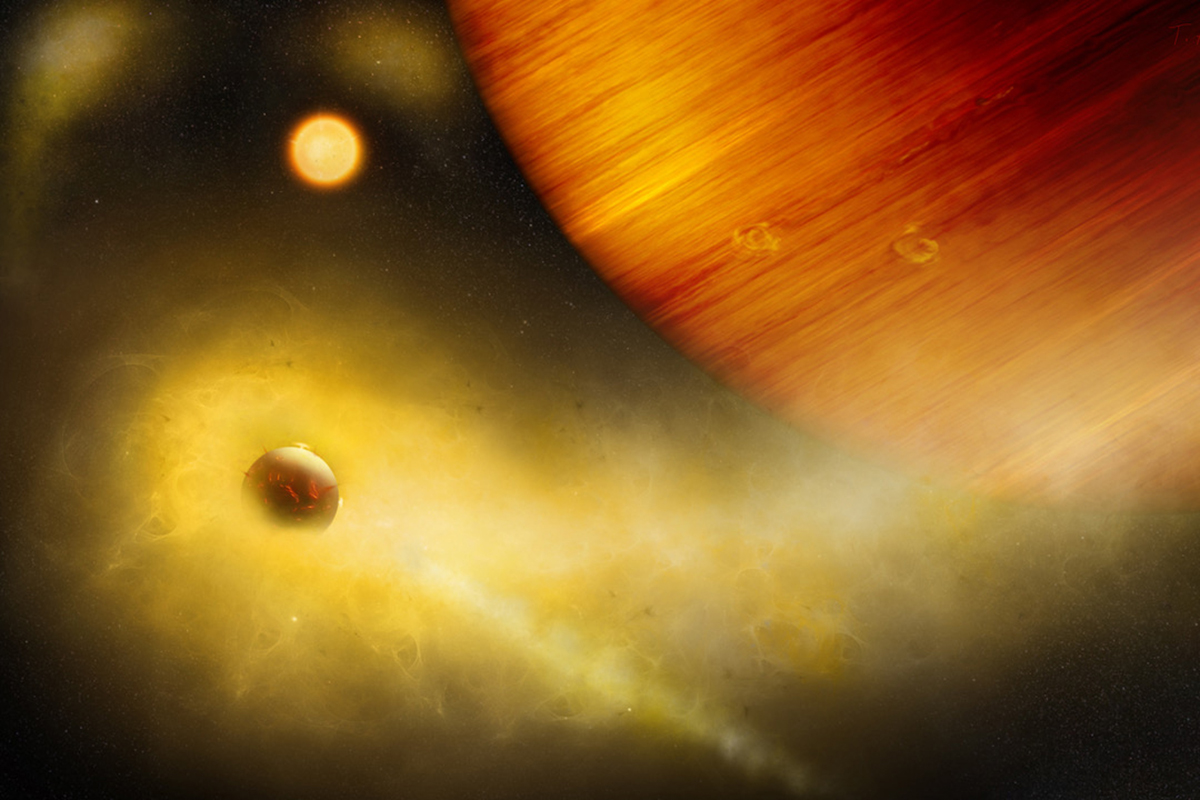Exo-Io: volcanic exomoon in orbit around WASP-49 b?
WASP-49 is a yellow dwarf star, somewhat smaller than the Sun and, in the grand scheme of the universe, just as unimportant as our own home star, so that up to now it hasn’t even been given a proper name. Astronomers also know it as “2MASS J06042146-1657550” or “TYC 5936-2086-1.” The fact that it also has the relatively short and catchy name of WASP-49 is thanks to the “Wide Angle Search for Planets”: WASP is an international cooperation that operates two autonomous telescopes. In 2011, researchers analyzing data from these telescopes discovered a planet orbiting this star, 550 light-years from Earth in the constellation of Lepus (the hare).
WASP-49 b is somewhat larger than our Jupiter. It is, however, what is called a “hot Jupiter.” WASP-49 b orbits its host star once every three days at a distance of 0.037 astronomical units (Earth is 30 times farther away from the Sun). It is so close to its star that it must be extremely hot. Researchers now think there is a moon in this rather inhospitable area. This exomoon – a moon outside of our own Solar System – would be an extreme version of Jupiter’s moon Io, thus, an exo-Io.
“It would be a dangerous, volcanic world with a molten surface of lava, a lunar version of hot super-Earths like 55 Cancri-e,” says Apurva Oza, post-doc at the Physics Institute at the University of Bern, “a place where Jedis would find only death, as Anakin Skywalker would know.” Rocky moons have previously been confirmed only in our own Solar System. Even for WASP-49, however, there are still only hints. The Bernese researchers determined that there must be an exo-Io because of the exceptionally high amount of sodium gas detected in the spectrum of the system’s planet, WASP-49b. “The neutral sodium gas is so far away from the planet that it is unlikely to be emitted solely by a planetary wind,” says Oza. Observations of Jupiter and Io in our Solar System by the international team, together with calculations of mass loss, show that an exo-Io could be a very plausible source of the sodium for WASP 49b. “The sodium is exactly where it should be,” says the astrophysicist.
In 2006, Robert Johnson at the University of Virginia and the late Patrick Huggins of New York University showed that large amounts of sodium for an exoplanet could hint at a hidden moon or ring of matter, and ten years ago, researchers in Virginia calculated that such a compact system consisting of three bodies – star, giant planet on a close-in orbit, and moon – could be stable for billions of years. “The enormous tidal forces in such a system are the key to it all,” explains Oza. The energy that is transferred by the tides to the planet and its moon keeps the moon’s orbit stable, and simultaneously heats it and makes it volcanically active.
For WASP-49b, the measured data fits very well with the existence of an exo-Io. There are also other possibilities, however, the researchers admit. For example, the exoplanet could be surrounded by a ring made of ionized gas or non-thermal processes might also be playing some role.
